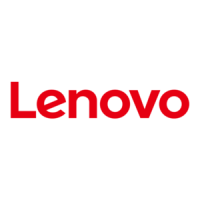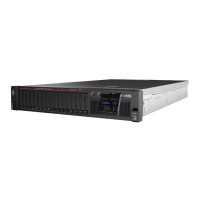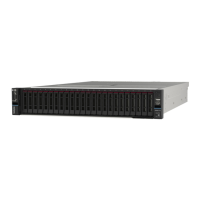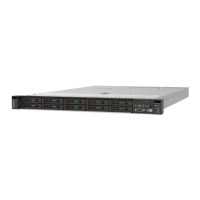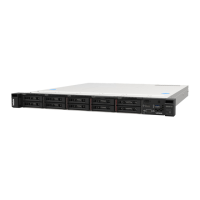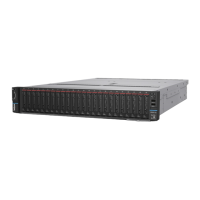Environment
ThinkSystem SR850 V3 complies with ASHRAE Class A2 specifications with most configurations, and depending on
the hardware configuration, also complies with ASHRAE Class A3, and Class A4 specifications. System performance
may be impacted when operating temperature is outside ASHRAE A2 specification.
Depending on the hardware configuration, ThinkSystem SR850 V3 server also complies with ASHRAE Class H1
specification. System performance may be impacted when operating temperature is outside ASHRAE H1
specification.
• Air temperature:
– Operating
– ASHRAE Class H1: 5°C to 25°C (41°F to 77°F); the maximum ambient temperature decreases by 1°C for every
500 m (1640 ft) increase in altitude above 900 m (2,953 ft).
– ASHRAE Class A2: 10°C to 35°C (50°F to 95°F); the maximum ambient temperature decreases by 1°C for
every 300 m (984 ft) increase in altitude above 900 m (2,953 ft).
– ASHRAE Class A3: 5°C to 40°C (41°F to 104°F); the maximum ambient temperature decreases by 1°C for
every 175 m (574 ft) increase in altitude above 900 m (2,953 ft).
– ASHRAE Class A4: 5°C to 45°C (41°F to 113°F); the maximum ambient temperature decreases by 1°C for
every 125 m (410 ft) increase in altitude above 900 m (2,953 ft).
– Server off: 5°C to 45°C (41°F to 113°F)
– Shipment/storage: -40°C to 60°C (-40°F to 140°F)
• Maximum altitude: 3,050 m (10,000 ft)
• Relative Humidity (non-condensing):
– Operating
– ASHRAE Class H1: 8% to 80%; maximum dew point: 17°C (62.6°F)
– ASHRAE Class A2: 8% to 80%; maximum dew point: 21°C (70°F)
– ASHRAE Class A3: 8% to 85%; maximum dew point: 24°C (75°F)
– ASHRAE Class A4: 8% to 90%; maximum dew point: 24°C (75°F)
– Shipment/storage: 8% to 90%
• Particulate contamination
Attention: Airborne particulates and reactive gases acting alone or in combination with other environmental factors
such as humidity or temperature might pose a risk to the server. For information about the limits for particulates and
gases, see
“Particulate contamination” on page 11.
Note: The server is designed for standard data center environment and recommended to be placed in industrial data
center.
Particulate contamination
Attention: Airborne particulates (including metal flakes or particles) and reactive gases acting alone or in
combination with other environmental factors such as humidity or temperature might pose a risk to the
device that is described in this document.
Risks that are posed by the presence of excessive particulate levels or concentrations of harmful gases
include damage that might cause the device to malfunction or cease functioning altogether. This
specification sets forth limits for particulates and gases that are intended to avoid such damage. The limits
must not be viewed or used as definitive limits, because numerous other factors, such as temperature or
moisture content of the air, can influence the impact of particulates or environmental corrosives and gaseous
contaminant transfer. In the absence of specific limits that are set forth in this document, you must
implement practices that maintain particulate and gas levels that are consistent with the protection of human
health and safety. If Lenovo determines that the levels of particulates or gases in your environment have
caused damage to the device, Lenovo may condition provision of repair or replacement of devices or parts
on implementation of appropriate remedial measures to mitigate such environmental contamination.
Implementation of such remedial measures is a customer responsibility.
Chapter 1. Introduction 11

